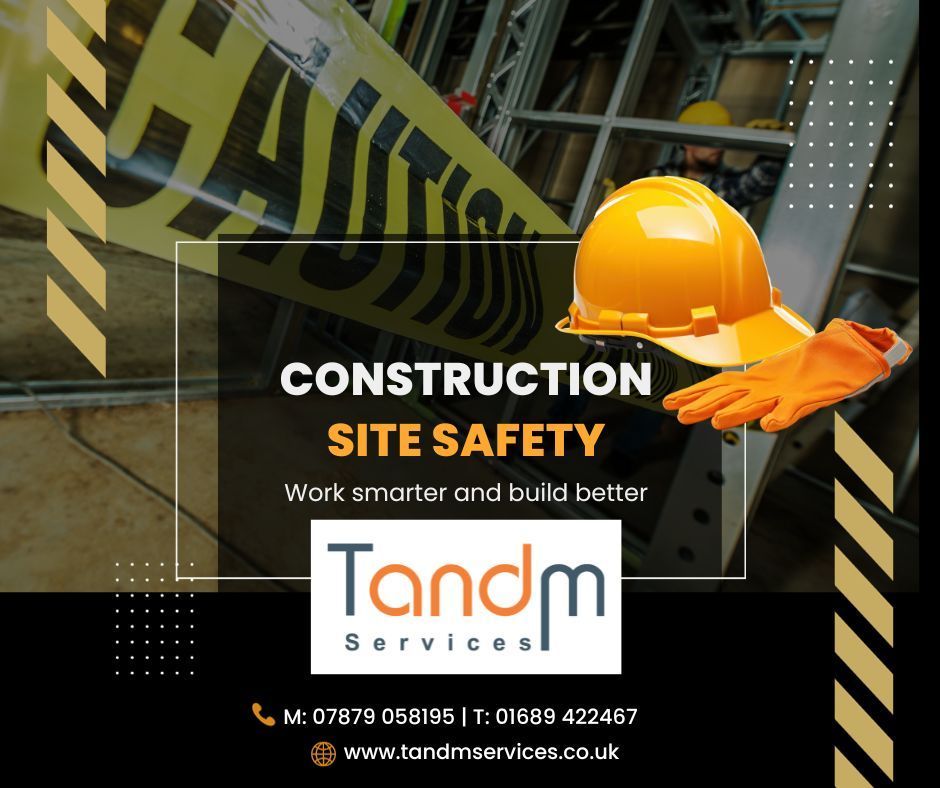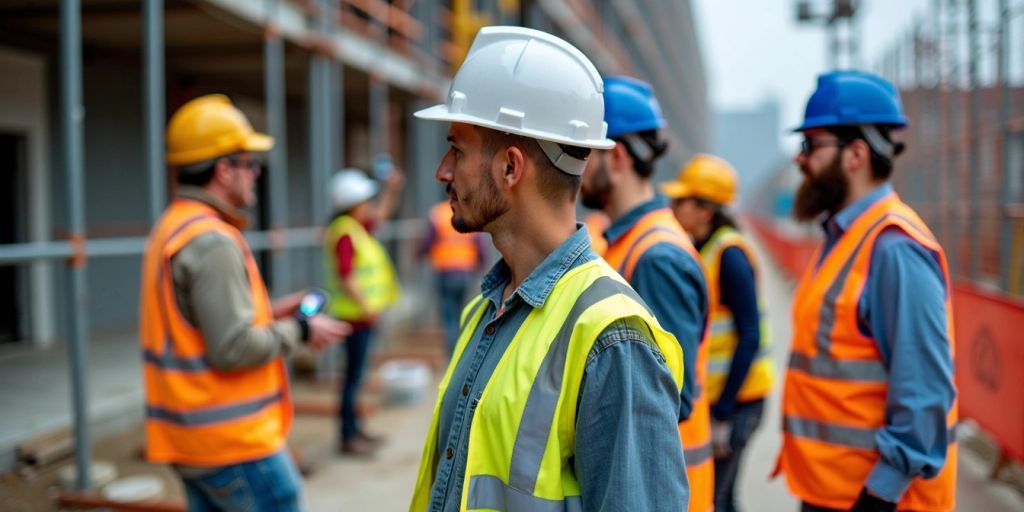
Ensuring Safety on Construction Sites:
A Guide to Identifying and Mitigating Hazards.
Construction sites are dynamic environments where various risks and hazards are an integral part of the job. The type of construction work being carried out significantly influences the nature of these hazards. For instance, working on scaffolding presents different dangers compared to handling asbestos. In this article, we will explore the top ten hazards encountered on construction sites and strategies to manage and mitigate these risks effectively.
1. Working at Height.
Working at height is a pervasive hazard in the construction industry. Statistics from the Health and Safety Executive (HSE) reveal that falls from height are responsible for approximately a quarter of worker fatalities in the UK each year. Adequate training is essential for employees working at heights, including safe practices on scaffolding, ladders, and roofs. Employers must assess the risks associated with working at height and create safety plans. Additionally, employees should be well-versed in safety procedures when working at elevated positions.
2. Moving Objects.
Construction sites are bustling with activity, with numerous moving objects like overhead lifting equipment, supply vehicles, and heavy machinery. To reduce the risk associated with moving objects, workers should avoid working in close proximity to them, stay vigilant, and wear Personal Protective Equipment (PPE), such as high visibility jackets, to enhance visibility and safety.
3. Slips, Trips, and Falls.
Slips, trips, and falls are common hazards on construction sites due to uneven terrain, ongoing construction, and scattered materials. Thousands of construction workers are injured annually from slips or trips, many of which are preventable through effective management of working areas and access routes. Maintaining well-lit, clearly designated walkways, tidying work areas, and dealing with wet or slippery surfaces promptly are essential preventive measures.
4. Noise.
Construction sites are inherently noisy environments, and prolonged exposure to loud, repetitive noise can lead to long-term hearing problems and accidents. Employers are responsible for conducting comprehensive noise risk assessments and providing appropriate PPE to safeguard workers from the detrimental effects of noise.
5. Hand Arm Vibration Syndrome (HAVS).
HAVS is a debilitating condition caused by prolonged use of hand-held power tools, and it can lead to permanent damage. Nearly 2 million people are at risk of developing HAVS, and prevention is crucial. Adequate protection and equipment maintenance are vital to preventing HAVS among construction workers.
6. Material and Manual Handling.
Handling materials and equipment, whether manually or with machinery, carries inherent risks. Workers involved in manual handling tasks should receive proper training, and those using lifting equipment must demonstrate competence in their use.
7. Collapsing Trenches.
Trench collapses are a common occurrence on construction sites and can pose grave dangers to workers. Site managers should carefully consider the type of trench support required and ensure ongoing inspections to maintain trench stability.
8. Asbestos.
Asbestos is a hazardous material found in many older buildings. Disturbing asbestos can release deadly fibers into the air, leading to severe health issues, including lung cancer. Adequate training and awareness of asbestos locations are vital for workers on construction sites.
9. Electricity.
Electrical hazards are prevalent on construction sites, with approximately 1,000 electrical accidents reported annually. These incidents often result from contact with power cables and electrical equipment. Proper training and qualifications are crucial for anyone working with electricity, and precautions should be taken to prevent accidental contact with live electrical components.
10. Airborne Fibres and Materials.
Construction sites generate significant amounts of dust, consisting of hazardous materials and fibres. Prolonged exposure can lead to respiratory diseases. Employers must ensure the use of protective equipment and effective dust control measures.
In conclusion, the construction industry is rife with hazards, but with proper training, planning, and vigilance, these risks can be mitigated. A proactive approach to safety, adherence to regulations, and ongoing risk assessments are essential for ensuring the well-being of construction workers and the successful completion of projects.
With our many years in the industry we are well versed in all safety aspects, so if you have a project you would like to discuss with us, please do not hesitate to contact us on the below:
Best
Amanda Wright
Construction Site safety

Ensuring Safety on Construction Sites: A Complete Guide to Hazard Identification and Risk Mitigation

133 High Street, Farnborough Village, Orpington, Kent BR6 7AZ
M:
07879 058195 | M:
07551 591076
|
T:
01689 422467

133 High Street, Farnborough Village, Orpington, Kent BR6 7AZ
M:
07879 058195 | M:
07551 591076
|
T:
01689 422467
133 High Street, Farnborough Village, Orpington, Kent BR6 7AZ
M:
07879 058195 | M:
07551 591076
| T:
01689 422467








